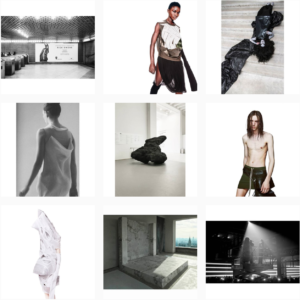A few weeks ago, a few members of the team grabbed their pens and papers and headed over to a lecture with Frieze. The subject? How to implement an effective Instagram account in art and fashion. Leading the talk was Jessie Ringham of Tate who naturally focused on the art field, and Laura Bradley from magazine Dazed and Confused who looked at Instagram and fashion. Each delivered a thought-provoking speech which really made us think twice about the purpose of Instagram. It’s a topic which can be debated for hours, so we’re not going to look at that today. Instead, we’ve picked out the key summaries from the lecture which we think are game-changers.
Digital Makes Art Accessible To Everyone
Jessie Ringham kicked off the talk with a powerful statement that struck a chord with us – ‘digital marketing makes art more accessible’ – it’s true for many industries, but even more so for art.
Some see art as something that is inaccessible and only for initiated people. Few were invited to exhibitions, before digital grew. It was a case where if you weren’t into art first, it was tricky to get more involved and be informed about the latest exhibitions. But today, we can thank social media for inviting us to the party. One post, and we know what art is around. There’s no doubt that social media has made art more accessible, but it’s also changed the rule of content creation. As Jessie highlighted, Tate needed to adapt their content to their audience but also educate about art and not just inform them about a new exhibition. Besides the type of content, the format needs to be taken into account. Nowadays, the masterpieces you can find in a grand museum can also be seen on the screen of smartphone…The rules have changed – our creativity is challenged, and guess what? It’s better like this.
Collaboration Is Key
As described on Forbes, “the biggest value that social networks offer goes beyond being marketing channels to push communication to prospects and customers. They are morphing into new channels for collaboration and innovation”.
The creation of Web 2.0 and the rise of social media has given new opportunities for ideas to come from anyone or anywhere; brands and companies can tap into and leverage by developing a collaboration system. Whether it’s teaming up with bloggers to launch a new campaign or encouraging a community to develop branded video content, collaborating with the general public and social influencers continues to evolve and create value for brands.
Embracing the #empty movement – which began in New York after images of a deserted Metropolitan Museum were shared online – Tate offered a group of Instagrammers the opportunity to explore the Tate Modern after hours, when the gallery was completely empty. Jumping on a trend that is currently rising in popularity across the art world, this collaborative project aimed to give ‘regular’ people a unique opportunity to experience art in a manner that is often exclusive to the elite – aligning with Tate’s ethos to use digital as a way to make art accessible to everyone.
Looking outside of the brand itself to stories that were connecting with newly influential individuals, Tate was able to generate loyalty and advocacy among a young market of consumers hungry for new experiences.
Housekeeping – Keep a Tidy Instagram
The Internet’s best-performing Instagram accounts all share a common feature: aesthetically-pleasing accounts.

Dazed Media Studio’s editorial director, Laura Bradley, reminded us of the importance of keeping our Instagram accounts clean and tidy. It may seem obvious, but too often we get distracted by making an individual picture eye-catching, that we forget about how it will actually fit with our entire feed.
All assets should be coherent and consistent – an account which delivers this is @rickowensonline, a feed that is mainly monochrome, making the occasional hits of colour really pop. He sticks to the same look and feel throughout his account, with his shades and use of capital letters in all copy. It’s something that’s so simple, but so easy to muck up when you’re not ruthless with yourself. What have we learnt? It’s better to let go of an image that looks fab on its own, but not with the rest of your feed. *sob*
Tone of voice / Trademark
Like cheese and crackers, great copy and a gorgeous image are meant to be together in perfect harmony. In many ways, imagery on Instagram can reflect a certain tone of voice. Take Oreo for example, vivid colours = a snappy and audacious personality. As much as the image is the focus on Instagram, the copy brings out the identity of a brand too. They both combine to make you famous for something. In some circumstances, words aren’t even necessary when posting on Instagram – sometimes an emoji is enough to send out the message you want to say.
Having a trademark tone of voice is comforting for the person that goes on your feed. They recognise it. They understand it. They like it. A great example of an account that nails this is @palaceskateboards. They’re the epitome of cool. A skateboarding brand that’s young, fresh, street – and their words evoke just this. Their feed sounds like your best mate who’s having an everyday chat with you. It’s a tone of voice which echoes their products – the laidback, chilled tracksuit that you want to hang out with and wear everyday. There are a countless number of brands who have a trademark tone of voice. They’re the brands that we go back to and anticipate what they’re going to post next. Having a familiar tone of voice doesn’t make you predictable – it makes you even more excitable and warming for your fan.
David Owens says “Instagram is the Internet” – and we couldn’t agree more. It’s the ideal channel to showcase the storytelling from your brand as it’s incredibly emotive. Who knows what is next for the channel, but we know it can only get better. For now, we’ll leave you with a thought by Hans Ulrich Obrist who summarises the ever-changing channel of Instagram.
“There’s a beauty to the fact that Instagram is being used in ways that no one ever planned.”

